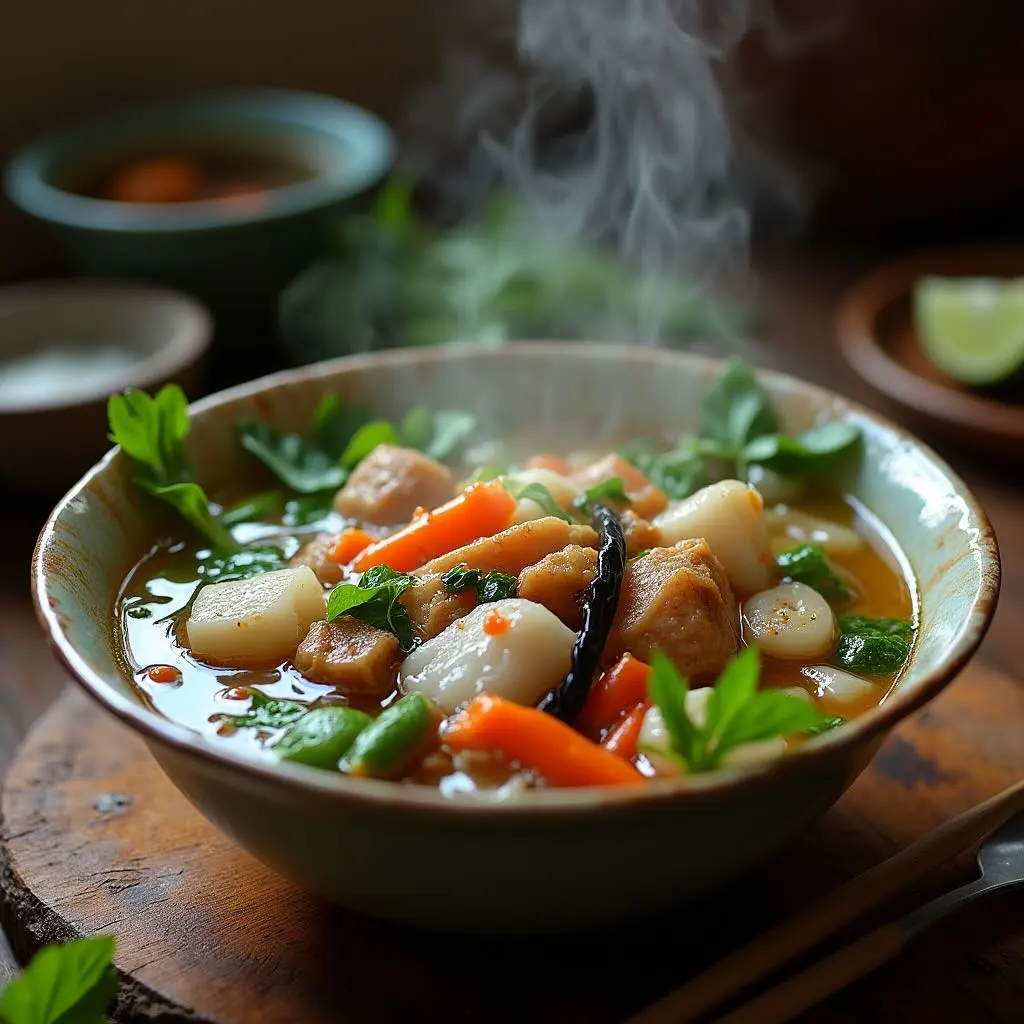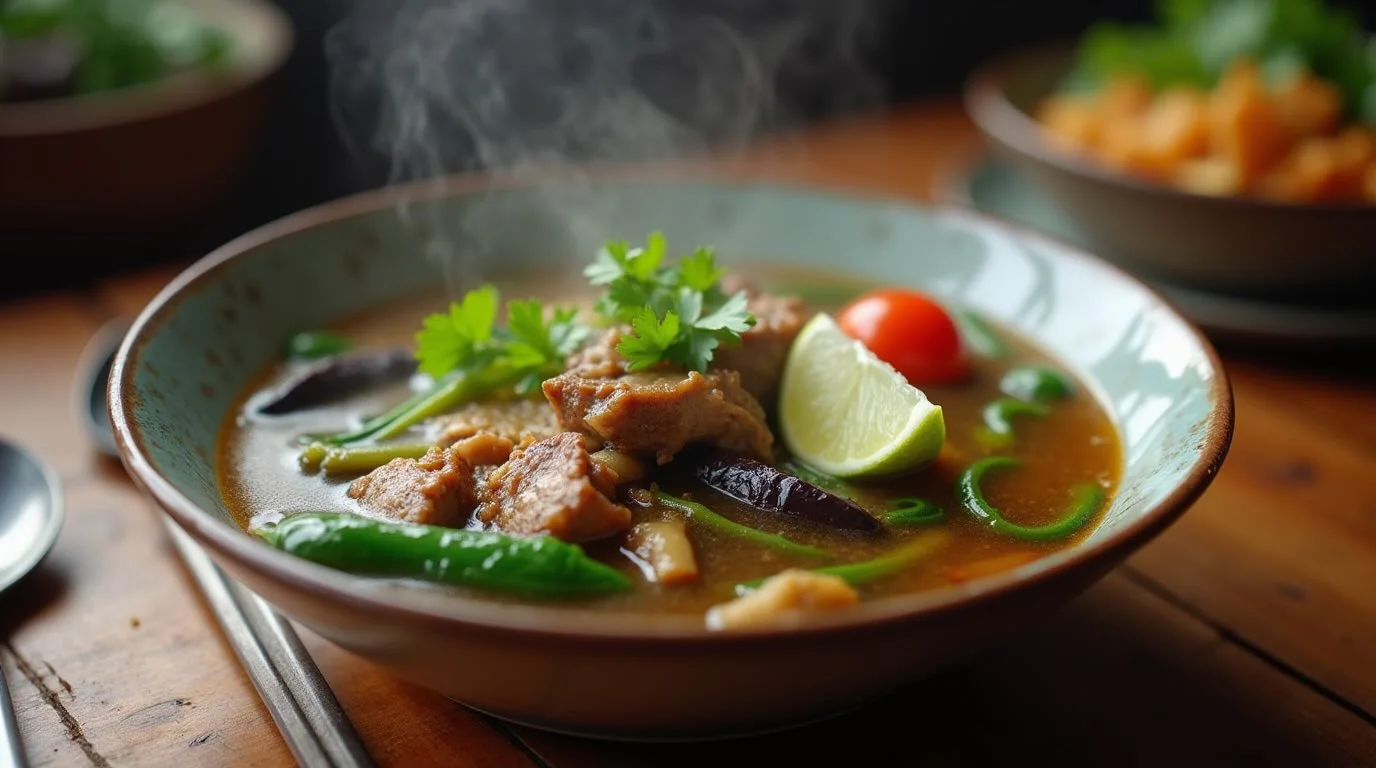Sinigang recipe is more than just a dish; it’s a warm, comforting blend of sour and savory flavors that unites families. Whether it’s a rainy day or a special gathering, this Filipino favorite has the power to turn a simple meal into an unforgettable experience. Today, we’re diving into everything you need to know to create an authentic sinigang that is as heartwarming as it is delicious.
Table of Contents
What is Sinigang recipe?

Sinigang recipe is a classic Filipino soup known for its uniquely tangy broth. The sour flavor, often derived from tamarind, makes it stand out from other Asian soups. Each spoonful is a perfect harmony of sourness, saltiness, and umami. A flavor profile that has cemented its place as a staple in Filipino homes.
This dish is highly versatile, with variations using pork, shrimp, fish, or even beef as the main protein. Vegetables such as radish, water spinach, and string beans are typically added, making it not only flavorful but also nutritious.
Ingredients for Sinigang
Essential Ingredients
To make authentic sinigang, you’ll need:
- Tamarind: The soul of the dish, providing its signature tang. You can use fresh tamarind, paste, or sinigang mix for convenience.
- Protein: Pork ribs are a classic choice, but shrimp, fish, or beef are equally delicious.
- Vegetables: Common options include radish, eggplant, water spinach (kangkong), okra, and string beans.
Substitutions and Add-ons
- No tamarind? Swap it with calamansi, lemon juice, or green mango for a different sour twist.
- Add variety: Experiment with additional vegetables like zucchini or cabbage to make the dish your own.
Ingredients Table
| Ingredient | Quantity | Notes |
| Tamarind paste | 3 tbsp | Adjust to your preferred tang |
| Pork ribs | 500g | Substitute with shrimp or fish |
| Radish | 1 cup | Sliced into thin rounds |
| Water spinach | 1 bunch | Trimmed and washed |
| String beans | 1 cup | Cut into 2-inch pieces |
Step-by-Step Sinigang Recipe
Preparing the Ingredients
Make sure everything is prepared before you begin cooking:
- Wash and chop the vegetables.
- If you’re using pork, cut it into bite-sized pieces. For shrimp, devein and clean thoroughly.
Cooking the Broth
- In a large pot, heat and sauté onions, garlic, and tomatoes until aromatic..
- Add water or broth and bring it to a gentle boil.
- Add the tamarind and stir well, letting the sour flavor infuse the liquid.
Adding Protein and Vegetables
- Simmer the protein in the broth until tender (around 30 minutes for pork).
- Gradually add the vegetables: start with radish and string beans, then finish with water spinach and okra.
Final Touches
- Sample the soup and adjust the seasoning with fish sauce or salt as needed.
- For an added kick, top with fresh chilies.
Tips for the Perfect Sinigang
- Go fresh: Fresh tamarind delivers a deeper, more authentic sour flavor than mixes.
- Timing matters: Add leafy greens last to avoid overcooking them.
- Pair it right: Serve sinigang with steamed white rice to balance the flavors.
Frequently Asked Questions (FAQ)
Q: Can sinigang be made vegetarian?
Absolutely! Use tofu or mushrooms as the main protein and add extra vegetables like zucchini or carrots.
Q: What’s the best substitute for tamarind?
If tamarind isn’t available, calamansi or lemon juice works well for a tangy flavor.
Q: Can I make sinigang in advance?
Yes! In fact, sinigang tastes even better the next day as the flavors develop.
Why You’ll Love This Sinigang Recipe
- Flavorful and Tangy: The perfect balance of sour and savory.
- Nutritious: Filled with fresh vegetables and wholesome ingredients.
- Customizable: Adapt the recipe to your taste or dietary needs.
Conclusion
Sinigang is more than just a soup. it’s a connection to Filipino heritage and a reminder of home-cooked warmth. Whether you’re cooking for family or exploring Filipino cuisine for the first time, this sinigang recipe is a surefire way to delight your taste buds.
Ready to experience the tangy, savory goodness of sinigang? Gather your ingredients and start cooking today! And don’t forget to share your creation with us. we’d love to see how your sinigang turned out.

